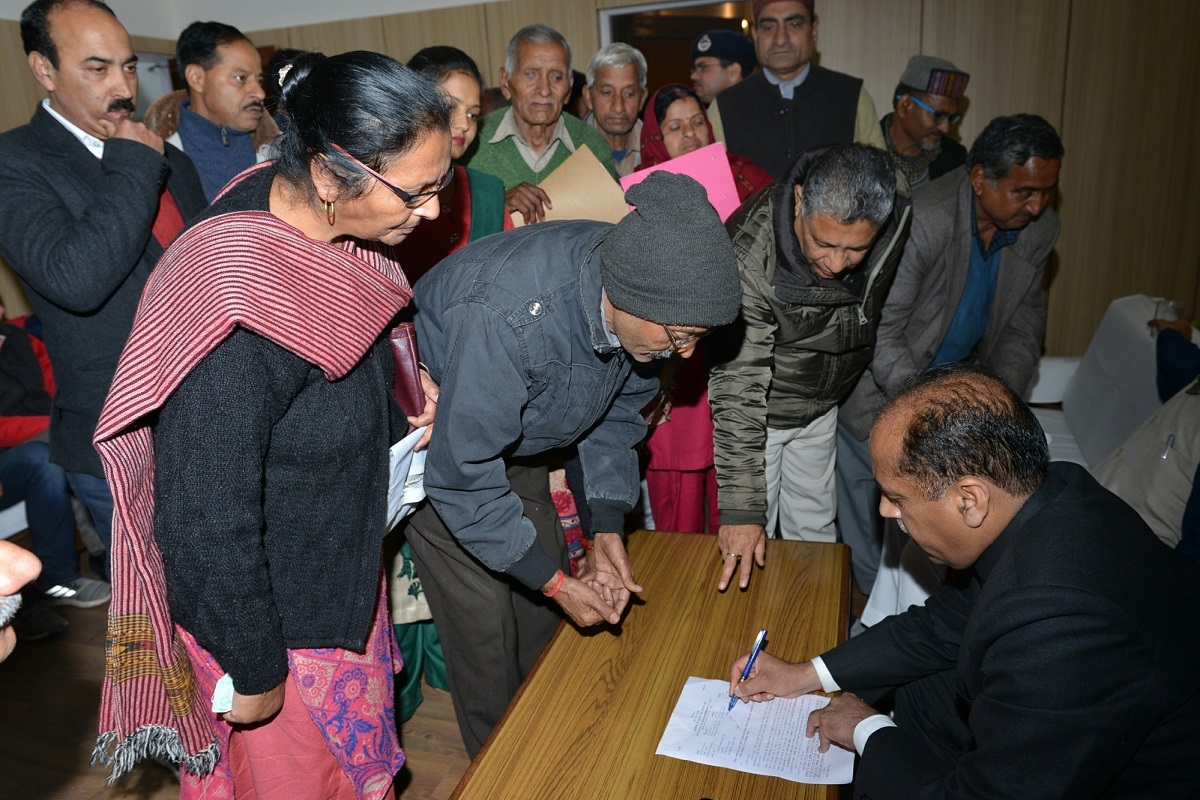In a paradox of sorts for the people residing in the remote Trans Giri area of Sirmaur district of Himachal Pradesh, their demand for the Scheduled Tribe (ST) status is gathering dust in files in government departments.
On the other hand their counterparts in Jaunsar Bavar area of Uttarakhand, that too was part of the erstwhile Sirmaur Riyasat are reaping the benefits of ST status (Both the areas were separated in 1815).
“Our culture, traditional attires, festival, local dialect and lifestyle are almost the same and even we still share family relations with them. But since 1967, our demand for ST status is still pending while they are enjoying benefits of the status,” Kundan Singh, general secretary of Hatti Sangharsh Samiti told The Statesman.
The locals had been promised of granting the ST status by both the major political parties, Congress and BJP since the last five decades but the status still remains a distant dream for them.
The people in this belt are poverty ridden and do not have adequate education facilities. The job opportunities are very less and most of the people from parts of this area traverse to Shimla for petty jobs.
The tribal status would provide separate funds for developmental activities for mainstreaming of the region, which includes Shillai, Sangrah and Renukaji area of Sirmaur district.
Singh said the demand was in the election manifesto of Bharatiya Janata Party in 2009 and 2014 Lok Sabha polls but the same is pending with the Registrar General of India and Union Tribal Affairs Ministry.
The issue was strongly raised by Shimla MP Virender Kashyap and Chief Minister Jai Ram Thakur in meetings with Prime Minister Narendra Modi and Home Minister Rajnath Singh. Even former Prime Minister Manmohan Singh too had promised to grant the tribal to the Trans Giri area of Sirmaur district, yet the locals had been deprived of it so far, he said.
“There have been several objections and queries by the Registrar General of India on the inclusion of the area under Schedule Tribe and the same have been clarified by the present state government.
Even the Tribal Research Institute of Himachal Pradesh University in its report in 2016 has strongly favoured the ST status to the area,” he added.
Singh said our two generations had fought for the status and now our third generation was raising questions on struggle. They are now suspecting that we have not been able to take up the issue forcefully.
“In the Lok Sabha polls, we have advised the locals, and even our Samiti, has decided to ask candidates to clarify their parties’ stance on the issue,” he said, adding they were hopeful of getting the status this time around as both BJP and Congress candidates knew about their issues.
Recently, the district administration had acknowledged the unique identity of Trans Giri area and had applied for the GI tag for Loiya (a kind of woolen shawl) and Dangra (dagger) that are part of their ancient culture.
It is worth mentioning here that Hatti Community, residing in the 133 panchayats of the trans-Giri area of Sirmaur district, still follows ancient lifestyle and secluded lifestyle where modernization is yet to sink in.
The community is separated by Tons River from the mainstream society living on the other side of the river. The locals still follow age old traditions such as animal sacrifice, folk dances like Barada Nati, Harul Raso and festivals like Budhi Diwali.











